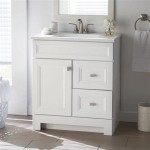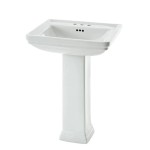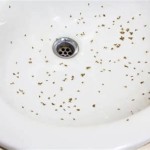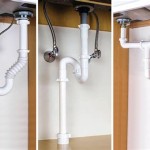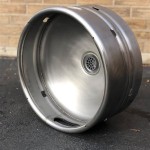How to Route a Bathroom Exhaust Fan
A bathroom exhaust fan is an essential appliance for maintaining a healthy and comfortable bathroom environment. It removes moisture, odors, and pollutants, preventing mold growth, mildew, and respiratory problems. Proper ventilation is crucial, and routing the exhaust fan correctly is a critical step in ensuring efficient operation. This article explores the essential factors and procedures involved in routing a bathroom exhaust fan.
1. Understanding the Importance of Proper Routing
Routing the bathroom exhaust fan correctly is vital for several reasons:
- Effective Moisture Removal: Properly routed exhaust fans efficiently remove moisture from the bathroom, preventing condensation, mildew, and mold growth.
- Odor Control: Exhaust fans eliminate unpleasant odors, creating a fresh and clean environment.
- Improved Air Quality: Routing the fan to the exterior prevents pollutants and contaminants from recirculating within the bathroom.
- Prevention of Backdrafting: Correct routing ensures that exhaust air is expelled directly outside, preventing backdrafting from other areas, such as the kitchen or fireplace.
Failure to route the exhaust fan correctly can result in numerous problems, including:
- Moisture Buildup: Inadequate ventilation can lead to excessive moisture buildup, promoting mold and mildew growth.
- Unpleasant Odors: Poor routing can trap odors within the bathroom, creating an unpleasant environment.
- Reduced Air Quality: Incorrectly routed fans can recirculate pollutants and contaminants, compromising air quality.
- Backdrafting: Improper routing can cause backdrafting, drawing air from other areas into the bathroom.
2. Essential Routing Considerations
When routing a bathroom exhaust fan, several factors must be considered:
a) Location
The exhaust fan should be located in the bathroom's ceiling or high on the wall, ensuring it effectively draws air from the entire space. Ideally, the fan should be situated near the shower or bathtub, where moisture is most prevalent. Installing the fan closer to the shower or bathtub will facilitate faster moisture removal.
b) Vent Path
The vent path should be as short and straight as possible to minimize airflow resistance. Using 4-inch diameter rigid PVC pipe for the venting is recommended for its durability and smooth surface, facilitating efficient airflow. Avoid sharp turns and bends in the vent path, as they can restrict airflow.
c) Termination Point
The exhaust vent should terminate outside the bathroom, ideally at least 3 feet away from any windows, doors, or air intakes. This ensures that the exhaust air is dispersed safely and does not re-enter the house. Install a vent cap with a rain guard to prevent water from entering the vent during storms.
d) Building Codes
Consult local building codes for specific requirements related to exhaust fan installations. These codes may specify minimum ventilation rates, vent pipe sizes, and termination points for exhaust fans.
3. Steps to Route a Bathroom Exhaust Fan
Routing a bathroom exhaust fan is a DIY project that can be completed with the right tools and knowledge. The following steps outline the process:
- Prepare the Installation: Turn off the power to the bathroom circuit at the breaker box. Locate the exhaust fan's installation site on the ceiling or wall, ensuring it's within reach of the electrical outlet. Mark the location for the fan and cut a hole in the ceiling or wall using a drywall saw.
- Install the Exhaust Fan: Mount the fan to the ceiling or wall using appropriate fasteners. Connect the fan's electrical wiring to the existing circuit, ensuring proper grounding. Install the fan's grill or cover.
- Route the Vent Pipe: Connect the vent pipe to the fan's outlet. Use appropriate connectors and clamps to secure the pipe. Route the vent pipe through the attic, crawl space, or exterior wall, following the shortest and straightest path possible.
- Terminate the Vent: Extend the vent pipe to the exterior of the house, terminating at least 3 feet away from any windows, doors, or air intakes. Install a vent cap with a rain guard to prevent water from entering the vent.
- Secure the Vent: Secure the vent pipe to the roof or wall using appropriate clamps and fasteners. Ensure the vent pipe is properly insulated to prevent condensation.
- Test the Fan: Turn on the power to the bathroom circuit and test the fan to confirm proper operation. Ensure the fan draws air effectively and that no leaks or obstructions are present in the vent path.
When routing a bathroom exhaust fan, consider professional assistance if you lack the experience or encounter complex situations. A licensed electrician or HVAC technician can perform the installation safely and efficiently.

Venting A Bath Fan In Cold Climate Fine Homebuilding

Bathroom Exhaust Fans Building America Solution Center

Bathroom Exhaust Fans Building America Solution Center

How To Vent A Bathroom Exhaust Fan

How To Use An In Line Exhaust Fan Vent Two Bathrooms Diy Family Handyman

How To Replace And Install A Bathroom Exhaust Fan From Start Finish For Beginners Easy Diy

How To Install A Bathroom Exhaust Fan Lowe S

Bathroom Exhaust Fans 7 Steps To Air Seal Prevent Drafts

Bathroom Exhaust Fans Building America Solution Center

Why Does My Bathroom Ceiling Fan Drip Foothills Roofing Calgary
Related Posts
